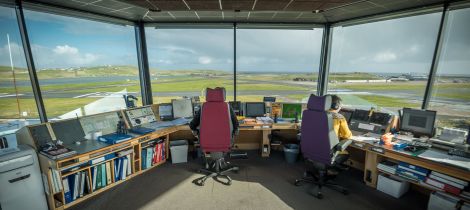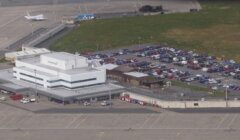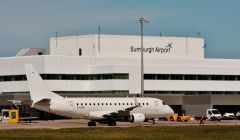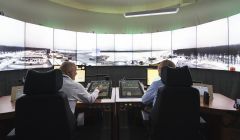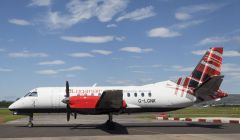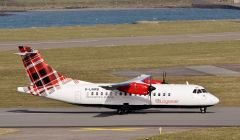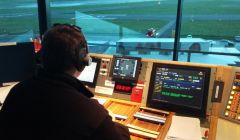Transport / Remote air traffic control plans prove unpopular with Lerwick Community Council
Thirteen full-time equivalent jobs at Sumburgh could be set to relocate to Inverness
AIRPORTS like Sumburgh are being “experimented on” as part of Highlands and Islands Airports Ltd (HIAL) plans to centralise air traffic control in Inverness, a Lerwick community councillor has claimed.
Gary Robinson expressed concerns about the proposals at a meeting on Monday as Lerwick Community Council responded to an impact assessment consultation on the plans.
“I think money is being put ahead of safety and that really does worry me,” he said.
Government-owned HIAL recently put out to tender an £8.5 million contract for providing air traffic control services for its Sumburgh, Dundee, Inverness, Kirkwall and Stornoway airports remotely from Inverness.
It has always stressed that centralising air traffic control in Inverness is safe.
There are concerns over HIAL’s proposals from politicians, local authorities and unions in a number of areas such as the effect on local employment.
An island impact assessment is now being carried out with local authorities and community councils.
HIAL chief Inglis Lyon previously said: “The island community impact assessment will not recommend whether the programme should or should not go ahead, rather it will highlight where mitigating actions are required to address any significant impact the programme may have on a particular community.”
The assessment document states that there are 13.1 full-time equivalent and three part-time jobs in air traffic control at Sumburgh, with these effectively set to relocate to Inverness under the plans.
HIAL accept that some existing affected staff at the airports may choose not to take up the option of a move to Inverness.
“Scottish Government are currently reviewing severance terms for all public bodies,” the document states.
At its Monday meeting Lerwick Community Council said it would maintain its objection to the proposals, which could see Sumburgh served remotely by March 2024.
Robinson was the most vocal against the plans.
Become a member of Shetland News
“It’s maybe not an issue of jobs per se but it’s an issue of high paying jobs in our community,” he said.
Robinson said the plans go against what the Scottish Government is trying to do in supporting island communities.
He added that he had more worries the more he looked into remote air traffic control.
“I think in some respects we are being experimented on here.”
He also claimed the move is driven by a desire to cut costs – alleging that safety is being made secondary to money.
Robinson also described the project as a “fait accompli”.
Stewart Hay, meanwhile, said that if communities are to develop then centralising services “is not a good advert for doing that”.
A spokesperson for HIAL previously said that the remote technology will “help deliver sustainable aviation connectivity and deliver a flexible, resilient air traffic service that will be highly adaptable as we ensure our airports are fit for the future”.
The company say the plans will “modernise the way airspace is managed and, importantly, deliver safe and secure air navigation now and in the future”.
Any changes introduced will need to be approved by the Civil Aviation Authority.
HIAL says the rationale for the change is in particular to address “historic and potential future staff retention and recruitment” challenges at the five airports.
Part of this is that the “population levels in some of the areas served by HIAL airports are also seen as limiting the ability to recruit”.
Become a member of Shetland News
Shetland News is asking its readers to consider paying for membership to get additional perks:
- Removal of third-party ads;
- Bookmark posts to read later;
- Exclusive curated weekly newsletter;
- Hide membership messages;
- Comments open for discussion.
If you appreciate what we do and feel strongly about impartial local journalism, then please become a member of Shetland News by either making a single payment, or setting up a monthly, quarterly or yearly subscription.






